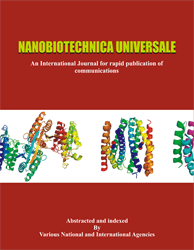Advancements in arthritis treatment: a review of Microsponge Drug delivery systems
Bornare Ashwini1*, Karodi Revan2 and Nikam Sarika3
*Department of Pharmaceutical Chemistry, Dr. D. Y. Patil College of Pharmacy, Akurdi, Pune - 411044 (India) 1*Corresponding author : ashwinibornare2@gmail.com Mobile number 9405656013 2,3Dr. D. Y. Patil College of Pharmacy, Akurdi, Pune - 411044 (India)
ABSTRACT
Rheumatoid arthritis is distinguished by chronic synovitis, systemic inflammation, and autoantibodies (especially against rheumatoid factor and citrullinated peptide). Genetic factors account for approximately 50% of the risk of developing rheumatoid arthritis. In developed countries, smoking is the most significant environmental risk. This condition is especially common in women and the elderly. For decades, drug administration for acute or chronic diseases has relied on different dosage forms such as tablets, capsules, creams, and injectable. However, the need for multiple daily doses often leads to fluctuating drug levels, causing toxicityand inefficiency. This challenge, along with issues like Frequent administration and erratic absorption has spurred the development of Sustained drug delivery systems. To overcome the symptoms ofarthritis a flexible medication deliveryoption is provided by microsponge technology, which was initially developed for topical uses before being investigated for oral administration more recently. Microsponges release active chemicals into the skin in a regulated and time-dependent manner. Topical treatments fail to enter the systemic circulation and have a number of drawbacks, including an offensive smell, greasiness, and skin irritation. The microsponge delivery technology solves this issue. These little but powerful carriers, which take the form of microscopic porous spheres, have an exceptionally large surface area that functions as a dynamic canvas for the effective encapsulation of medicinal substances.
